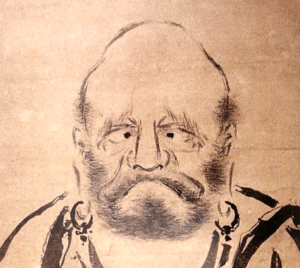Did Bodhidharma already know martial arts?

I did some research about Bodhidharma’s background in martial arts. This is what I found.
The origins of Bodhidharma’s martial arts background are somewhat uncertain, and there are different accounts of his martial arts training. Some legends say that he was trained in Kalaripayattu, an Indian martial art that incorporates striking, grappling, and weaponry techniques. Other legend tells us, that he was trained in martial arts during his time as a soldier or bodyguard before becoming a monk.
However, let’s delve into a tale often recounted in legends, although I must express my skepticism about its accuracy. According to this narrative, Bodhidharma is acclaimed as the progenitor of the Shaolin style of Kung Fu, a system he purportedly imparted to the monks dwelling within the Shaolin Temple.
In this story, the Shaolin style is portrayed as a martial art characterized by its emphasis on hand-to-hand combat techniques, blending aspects of Chinese martial arts with Bodhidharma’s own spiritual and meditative practices. Allegedly, Bodhidharma drew inspiration from his personal martial arts background and knowledge of Indian martial traditions in crafting the Shaolin style.
Legend, tinged with uncertainty, suggests that Bodhidharma’s martial arts teachings at the Shaolin Temple catalyzed the emergence of numerous Kung Fu styles. Monks under his guidance purportedly ventured forth to forge their unique techniques and systems.
“But didn’t Bodhidharma develop Kung fu from the movements of animals?”
Yes, it is often said that Bodhidharma created the Shaolin style of Kung Fu by observing and drawing inspiration from the movements of animals in nature. According to legend, Bodhidharma watched animals in the wild and noticed how they moved and fought, and he used these observations to develop a system of fighting techniques that he taught to the monks at the Shaolin Temple.
The Shaolin style incorporates many movements and techniques that are inspired by the movements of animals, such as the tiger, snake, and crane. These animal-inspired movements are meant to help practitioners develop strength, agility, flexibility, and balance, as well as to cultivate a sense of grace and fluidity in their movements.
Myths and Tales.
While numerous myths and tales swirl around Bodhidharma and martial arts, a healthy dose of skepticism is wise. Establishing a direct link between Bodhidharma, Buddhism, and martial arts remains elusive. While he may have played a significant role in Ch’an and Zen Buddhism, there’s no credible evidence to suggest that he created or developed a martial arts style at the Shaolin Temple.
It’s even possible that the association between religion and martial arts was a calculated marketing strategy back in the day. Notably, Itosu Anko rejected the notion of religious origins, as evidenced in his 1908 handwritten paper: “Karate does not come from Confucianism, Buddhism, or Taoism”.
In today’s context, it’s reasonable to dismiss the myth attributing the origin of Shaolin Kung Fu to Bodhidharma. Linking the art’s inception to a culturally significant figure seems more about promotional tactics than historical accuracy.
In a similar vein, we can draw parallels to the introduction of Karate in Japan. The adoption of the new name, Karate-do, with its allusion to the mental path, undeniably served as a marketing strategy and proved to be quite effective.
The myth’s origins.
The following provides a comprehensive explanation of the myth’s origins 1.
The idea that Bodhidharma founded martial arts at the Shaolin Temple was spread in the 20th century. However, martial arts historians have shown this legend stems from a 17th-century qigong manual known as the Yijin Jing. The preface of this work says that Bodhidharma left behind the Yijin Jing, from which the monks obtained the fighting skills which made them gain some fame.
The authenticity of the Yijin Jing has been discredited by some historians, including Tang Hao, Xu Zhen, and Matsuda Ryuchi. According to Lin Boyuan, “This manuscript is full of errors, absurdities, and fantastic claims; it cannot be taken as a legitimate source.”
The earliest available copy of the text dates back to 1827, while the composition of the text itself has been traced to 1624. However, the widespread association of Bodhidharma with martial arts only gained prominence in the 20th century due to the serialization of the novel “The Travels of Lao Ts’an” in Illustrated Fiction Magazine between 1904 and 1907. This story was quickly picked up by others and spread rapidly through publication in a popular contemporary boxing manual, Secrets of Shaolin Boxing Methods, and the first Chinese physical culture history published in 1919. As a result, it has enjoyed vast oral circulation and is one of the most “sacred” of the narratives shared within Chinese and Chinese-derived martial arts. That this story is a twentieth-century invention is confirmed by writings going back at least 250 years earlier, which mention both Bodhidharma and martial arts but make no connection between the two.
Thanks for reading.
Gert
Footnotes.
1 Wikipedia on the subject.
Share this article